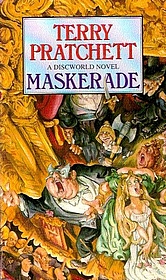


As the thesis subsequently argues, Terry Pratchett’s witches interact with, manipulate, and frequently resist the story of the witch as an evil woman so prevalent in early modern texts and consequently in fantasy fiction up until the late nineteen eighties. The thesis thereupon argues that by the end of the seventeenth century, the witch stereotypes that would be such an influence on the fantasy fiction genre of modern times had clearly developed. The main focus of this part of the thesis is on ways in which early modern reinterpretations of Circe and Medea intersect with traditionally English witches of the hag variety, and how in turn this relates to marked reductions in the power witches were said to possess, often in conjunction with more humorous representations of these figures in early modern texts. This thesis initially traces the development of the two major strands of witch stereotypes, the dangerous seductress and the ugly old hag, from the first examples we have of them, in the myths of Circe and Medea, to reinterpretations of these myths in select early modern texts. The story of the witch has always been about dangers presented by her nonconformity and resistance to gender expectations.


 0 kommentar(er)
0 kommentar(er)
